This Content Is Only For Paid Subscribers
Welcome to our new docuseries exploring what is happening to the office through the lens of trusted and emerging thinkers.
Larissa believes that designing spaces and organizational structures with consideration for the 36 types of power at work can provide a guide for a vibrant and healthy work environment. Find out what designers and workplace strategists must consider to create environments that promote creativity, well-being, and productivity.
Take Founder’s Round Survey
Video Transcript
Types of Power (01:05)
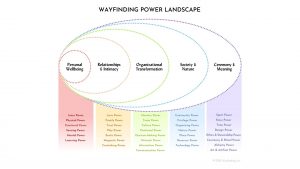
The connective tissue is through the 36 types of power that my team and I have found show up at work most frequently. So if all of these types of power exist, if the capacity to move energy through systems isn’t just one monolithic thing, but it actually has all these expressions, tending the different types of power can be a design guide.
So how we’ve done a lot of design around necessary types of power at work that we’re aware of, like decision making power and networking power and information power. But there are other types of power that keep organizations vibrant and bright, like care taking power. There are always caretakers in the team, like our sensing power. Like our physical power. You know, we started to see spaces that acknowledge our need for mobility and wellness and not just sitting in fixed, rigid places. There’s ecology power, so our relationship to living things brings us more alive. There’s art and artifact power, which goes back to the important necessity of beauty.
For our inspiration, for our sense of wellbeing, for our sense of clarity of mind. How are we designing for trust power at work? How are we designing for opportunities for playful spirits at work? How are we designing with recognition of privilege power, and accounting for that in how we work? Those are some of the questions, and across all of the 30 dimensions we can ask: How am I accounting for this? How am I being inspired by this in my design choices? So it’s always an organization’s choice, what they want to commit to in their values, and each of the types of power can express as power that serves the whole and shadow power.
Bring People To Life (03:09)
 It can get complex when we’re looking at the 30 types of power. So there are some essential metrics that I use to navigate by. One is aliveness, vitality, life force. So how are we considering the impact to aliveness of every individual, even beyond just humans? Are more than human, living kin, in the designs we create? Or are we only considering the aliveness of some in our designs.
It can get complex when we’re looking at the 30 types of power. So there are some essential metrics that I use to navigate by. One is aliveness, vitality, life force. So how are we considering the impact to aliveness of every individual, even beyond just humans? Are more than human, living kin, in the designs we create? Or are we only considering the aliveness of some in our designs.
The second one is what I call consciousness balance. So it’s how present, how clear, how settled in my nervous system, so untriggered, unactivated, am I? We know that activating our senses at work can bring us more alive because that mimics what it’s like when we’re out in nature.
Those two metrics are incredibly powerful and can be a great place to start and provoke your dreaming. Oftentimes when we look at the metrics of money or productivity, it cannot account for are we getting healthier by working or are we declining at work, or are we just surviving? And because we are acculturated to overwork, the tendency is that we’re either not getting healthy and we’re just flatlining, or we’re declining for most people.
But it can feel very taboo to talk about. So, one example in a research project is to go investigate different environments, different places where people feel like they come to life because of the setting. And what is it about the setting? What is it about the multisensory experience? What is it about the diversity of spaces and positions that they’re able to be in, and the configurations that they can have?
Another is we know certain things agitate our minds. We know that you know, extended blue light exposure from our screens interrupts our circadian rhythms. Different ways of interacting with technology or being in one fixed position all day. They have impacts on our body. And so then on our creativity and our stamina and our brightness.
So those aspects are things that I think we must necessarily consider if we want the office to breathe back to life and be a heart that people want to come too. Because the amount of choice that exists at home to get up and to move and to tend myself and to do the dishes or have a snack or go for a walk. How are we creating spaces that are as magnetic, as alive, as vibrant, that encourage these different ways of being as our best way of working?
Teal Organizations (06:22)
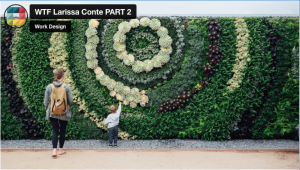 If organizations have belief sets that govern how we work and how we structure and how we make decisions. The concept of organizational evolution rises with different values expressing, and the furthest expressed layer of organizational evolution that has been articulated is something that’s known as the teal organization.
If organizations have belief sets that govern how we work and how we structure and how we make decisions. The concept of organizational evolution rises with different values expressing, and the furthest expressed layer of organizational evolution that has been articulated is something that’s known as the teal organization.
An organization that values an evolutionary purpose, self-management and wholeness. And I think those three pillars are so powerful to be part of your design considerations as space designers, whether you’re the architects or you’re the workplace strategist, that how at work is our space expressing our evolutionary purpose? Does our space even speak to who we are? Because when we have that meaning making externalized outside of us, it’s something we can anchor to that lifts us. You know, we’re so driven by purpose.
Then for self-management, the concept of being a self-organizing system and people having the self-determination to create how they work or create projects or stand up new initiatives. How can our physical environment support the layer of human initiative and self-management tools that exist in our technology environment? What encourages people to be self-managing and adaptive and mobile? And then lastly and perhaps most challenging is wholeness. Wholeness has been, in my observation, the slowest of the three to really come into vibrant expression in our workplaces because we’re learning how to hold each other in our wholeness.
We’re learning what that means at work. We’re learning that we each get to be vulnerable, that we can get tired or even really depleted. We’re not always at our best looking shiny and bright. So how can we be real about that and work, and how can our spaces consider that?
Leadership Alignment (08:43)
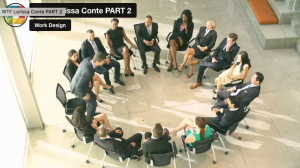 If a client is aspirational and has an organization espousing values oriented to inclusivity, justice and sustainability, and regeneration, and benefiting the greater good, then you know that’s what you’re working with. But not every leader will choose that. The choice of what we include and who we account for and how much we account for at work is obviously going to be governed by the decision makers.
If a client is aspirational and has an organization espousing values oriented to inclusivity, justice and sustainability, and regeneration, and benefiting the greater good, then you know that’s what you’re working with. But not every leader will choose that. The choice of what we include and who we account for and how much we account for at work is obviously going to be governed by the decision makers.
Part of the power consideration that exists in the design process with a leader and a leadership team and an organization is – are the main decision makers or if there’s only one, is the main decision maker aligned with the values that the organization expresses? And when and how do you try to design a space that might not be reflective of what's being espoused or a leader themselves?
And this is part of the power conversation. If it’s being approved, but if it’s not aligned with the way culture is actually occurring, that dissonance will be felt. But the decisions you make with your team and with your people are part of yours to dance with. To ask, do we want to encourage, do we want to encourage a forward thinking evolution about how we can work? Or how can we support an audacious leader to reach further?
Finding Cultural Representatives (10:31)
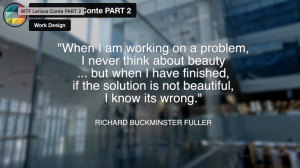 The space can help be an encouragement, a forum for flowering more into those ideals. Because every organization, every individual, we all have values that are conscious and unconscious, that are lived by and that are aspirational. And so a great opportunity in the design process is to understand: Where is the culture today? And where would they like the culture to be? And what are some of the gaps? And how can the evolution of space and choices in space support that organizational aim?
The space can help be an encouragement, a forum for flowering more into those ideals. Because every organization, every individual, we all have values that are conscious and unconscious, that are lived by and that are aspirational. And so a great opportunity in the design process is to understand: Where is the culture today? And where would they like the culture to be? And what are some of the gaps? And how can the evolution of space and choices in space support that organizational aim?
Part of the opportunity for designers who are situated outside of organizations is not just to understand the goals and the state admission, but also the lived embodiment of the culture in the team. So how to find cultural representatives who speak about how those values live to life today and maybe where they’re stuck.
One suggestion as a former cultural consultant to organizations where I would do large culture transformations is there are people, if you get into an organization, you start asking people who are culture holders or well-known individuals who really keep the spirit of the organization alive. Those are great allies of yours in the design process to go talk to them and go talk to them about the stories that they hold and the symbols that they find really anchor the group identity, the organizational identity.
Instances that have signified times when we overcame something challenging or we achieved something great. That’s part of this widening of the design team and the concept of who is on my design team and who’s here to help because it can’t possibly all sit just on the designer’s shoulders when we’re looking at all of these realms to be considered. It can start to get overwhelming as a designer and so yes. How as designers do we begin to be more holistic in our consideration of design? That’s our taking self responsibility, but then finding who are our teams and collaborators who we let them inhabit their mastery to create a network for that more holistic source design approach.
I find it helpful to look through the lens of values of what are the goals of our organization, of trying to achieve those gaps, not only in business performance again, but in cultural evolution? And then how through the lenses of each of these specialists or of each of these mastery areas, can we pull in different elements to get us there?
Achieving The Dream (13:34)
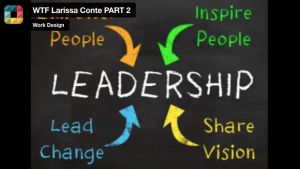 The aspirations of an organization and of a leadership team about their relationship to power and how they want to breathe power to life in enlivening ways and celebratory ways and motivating ways. In those regards, we start first with recognizing: Who are we as people? And who do we want to become? Because the aspiration of the leaders and the leadership team, and the organization and the business, those need to be clearest first.
The aspirations of an organization and of a leadership team about their relationship to power and how they want to breathe power to life in enlivening ways and celebratory ways and motivating ways. In those regards, we start first with recognizing: Who are we as people? And who do we want to become? Because the aspiration of the leaders and the leadership team, and the organization and the business, those need to be clearest first.
Because when those are clear and our challenges are clear, then that’s ripe material for our space designers, for our technology designers, for our landscapers, for our community designers. Even holding the question of how does this best come together? We have to know what we’ve wrestled with as individuals and as collectives in our stories, in our efforts, and in our psyches, before we start committing to our external creations and spaces, and seeing how beautiful things can be on the outside, we want to know what the vision is for us as leaders and decision makers and teams first.
Leadership Alignment (14:58)
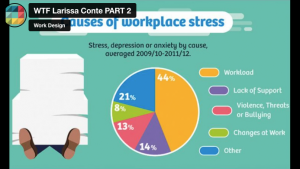 One of the elements of design that are so important now is around this metric of aliveness, because we need to consider how redesigning spaces that help maintain our health because so many of our spaces have been contributing to our illness. There’s a statistic from the medical community that 75 – 90% of all diseases are connected to the stress response.
One of the elements of design that are so important now is around this metric of aliveness, because we need to consider how redesigning spaces that help maintain our health because so many of our spaces have been contributing to our illness. There’s a statistic from the medical community that 75 – 90% of all diseases are connected to the stress response.
So if we just look at that metric, there are things that we know in our built environment contribute to stress. We know about interruption of the circadian rhythm. We know about monotony and lack of beauty. We know about overstimulation and, you know, like those bars at airports, if you’ve seen all the screens there and just having our visual field interrupted by so many screens.
So again, coming back to the question of – how are we designing for the whole human? And recognizing we want our team members to be fully alive and take responsibility for the ways that we’re contributing to their aliveness or detracting from it, through the spaces we invite them into as well as the cultures we invite them into.
The True Cost (16:25)
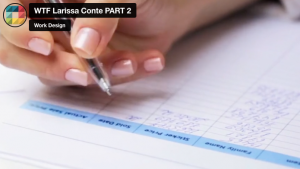 Part of the illusion of costs that has been used as a metric for a long time in many fields is thinking that we’ve accounted for all of the costs. Cost is always a consideration in the design process and I invite a consideration from the field of environmental economics about true cost accounting and recognizing what are the unaccounted for externalities? Because if we’re buying the cheapest materials, when we take a holistic view and we look at our supply chain, how are the trees harvested? How is a petroleum-based industrial carpet affecting the respiratory rate of our people in the office? A low price tag for us as the buyers doesn’t necessarily reflect the true cost of what we’re doing. Yes, businesses always have, we always have an amount of budget that’s available and we get to be, we have the opportunity to be more mindful about who we’re letting our costs fall onto when we don’t take responsibility for them ourselves.
Part of the illusion of costs that has been used as a metric for a long time in many fields is thinking that we’ve accounted for all of the costs. Cost is always a consideration in the design process and I invite a consideration from the field of environmental economics about true cost accounting and recognizing what are the unaccounted for externalities? Because if we’re buying the cheapest materials, when we take a holistic view and we look at our supply chain, how are the trees harvested? How is a petroleum-based industrial carpet affecting the respiratory rate of our people in the office? A low price tag for us as the buyers doesn’t necessarily reflect the true cost of what we’re doing. Yes, businesses always have, we always have an amount of budget that’s available and we get to be, we have the opportunity to be more mindful about who we’re letting our costs fall onto when we don’t take responsibility for them ourselves.
It’s All About Collaboration (17:39)
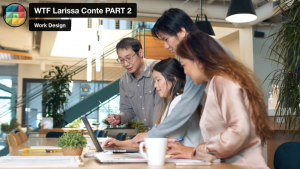 One of the biggest hurdles that can show up when we begin to widen our field of awareness and see all of these different threads is that we can run into overwhelm. We can feel, oh, now do I have to become an expert in every single one of these spheres of life in all of these disciplines? Do I have to be literate and masterful in all of them?
One of the biggest hurdles that can show up when we begin to widen our field of awareness and see all of these different threads is that we can run into overwhelm. We can feel, oh, now do I have to become an expert in every single one of these spheres of life in all of these disciplines? Do I have to be literate and masterful in all of them?
And there’s an edge that we get to play with there to say, how can I take responsibility for widening my awareness? Yes, but also recognize none of us can do this alone. We must do this as teams and collaborators. So that internal work of taking responsibility for my own awareness of how I show up in my power that serves the whole or my shadow power, is a fundamental seat of responsibility, but we don’t have to become technically masterful in every single discipline to be functional teams because collaboration is where we find our greatest leverage.
So recognizing it doesn’t all sit on the designers alone. It doesn’t all sit on the leaders alone. It doesn’t all sit on the culture advocates alone. We each get to find our own form of sovereignty, of how are we as employees, how are we as participants in the workplace and the evolution of the workplace, taking responsibility for our own alignment, for our own power? It’s a collective effort that we’re engaging together to all become intentional designers and recognize we are all designing our lives. We’re all designing our ways of working. We’re all designing this future of work together.
Note: Some images, text, and links have been updated since the original recording.
Feeling Inspired? Here Are the Actions You Can Take Now:
1) Incorporate different frameworks to instill integrity and wholeness in your designs
Here are the main ones referenced in the video that you can refer back to.
- Look at the 5 scales of the Wayfinding Power Landscape.
- Where could your organization weave more connective tissue and remove blockage to infuse greater aliveness in the function of your whole team, business, and community?
-
- Use the 36 types of power in the Wayfinding Power Landscape as a design guide to inform your designs.
- To see what’s been accounted for, what’s missing, and what could be brought in more fully, reference the full map of the 36 power types in this PDF.
- Use the 36 types of power in the Wayfinding Power Landscape as a design guide to inform your designs.
- Consider designing for both Aliveness & Consciousness Balance in all your designs.
- Here’s an article to learn more about the nuances of these two metrics to help expand power that serves the whole.
- Aim to include the 3 core attributes of Teal Organizations in your space and experience designs—Evolutionary Purpose, Self-Management, and Wholeness.
2) Stand more fully in your voice and values for Power that Serves the Whole in the design process
- What is 1 personal value of your own that expresses Power that Serves the Whole which you have not been standing for as courageously as you would like in your design work?
- How can you step more fully into that value and stand for it more deeply in your life and work?
- What’s one thing you can do in the next 24 hours, this week, and in every project to bring that value more fully to life?
3) Enrich you team & your creative responsibility
- Who are the other voices and stewards of certain types of power that you want to include in your design process?
- What responsibility do you need to take for how you personally conduct power or have responsibility for — and what can you entrust to be held by others?
- What collective agreements need to be made to ensure everyone is moving from their personal sovereignty, dedication to the collective good, and honoring of each other’s contribution and particular power constellations?
If you want to explore the 36 power types more fully, check out this free ebook, How to See Your Real Power, or get detailed information about how you express each of the power types via this Power Assessment for Leaders.
Resources:
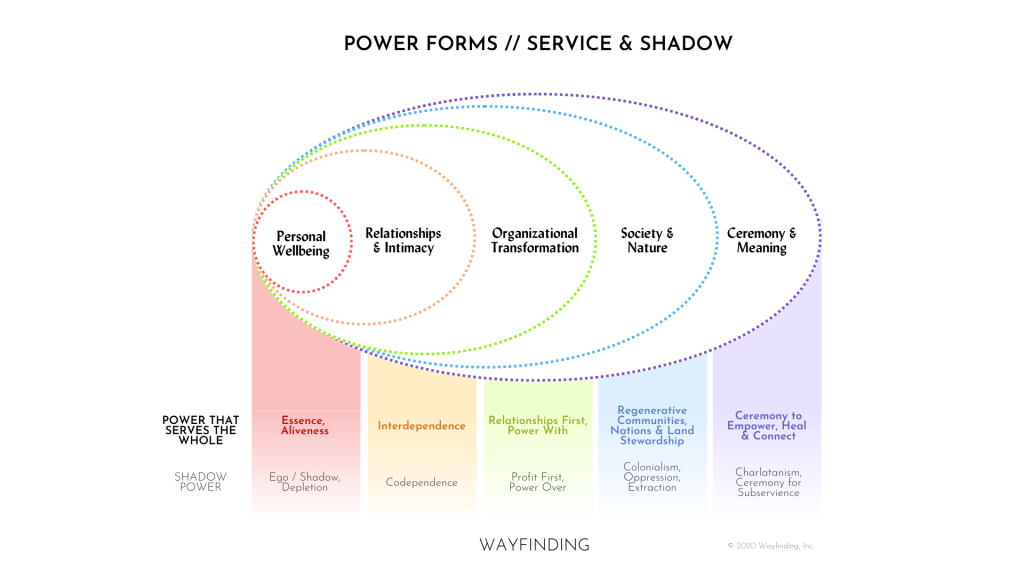
Meet Larissa Conte:
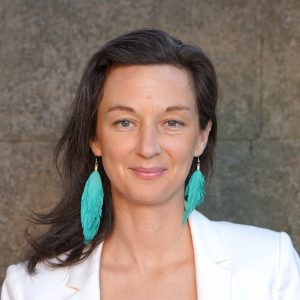 Larissa Conte founded Wayfinding in 2016 to equip leaders with enduring resources for embodying their sovereignty, following a life calling, and deepening their practice of Power that Serves the Whole.
Larissa Conte founded Wayfinding in 2016 to equip leaders with enduring resources for embodying their sovereignty, following a life calling, and deepening their practice of Power that Serves the Whole.
She is an internationally-recognized leadership coach whose insights on power source from 20+ years of devoted interdisciplinary study, application, and lived experience. With rich experience as a global consultant, coach, healer, regenerative designer, rites of passage guide, and tracker, she’s excited to offer this custom synthesis of insights and tools only found at Wayfinding to advance Power that Serves the Whole.
Larissa has served leaders from around the world in startups to the Fortune 100 with deep experience of over 20,000+ hours as a coach. She brings her knowledge to life through transformative methodologies, experiences, and initiations for leaders from all walks of service that invite their greater wholeness to emerge. She was formerly the Chief Culture and Design Officer at Invisible, a Senior Associate at Lippincott, and the Chief Happiness Officer at The Quality of Life Foundation. Larissa has a self-designed M.S. from Stanford University in Cultural Philosophy of the Environment and a life Ph.D. having spent 11.5 years healing from a near-fatal accident.
Episode 3 Part 2 Credits:
- Created By Bob Fox
- Produced By Work Design Magazine
- Directed By Bob Fox
- Edited By Katie Sargent & Bob Fox
- Special Thanks to Amanda Gram & Malena Boylan

